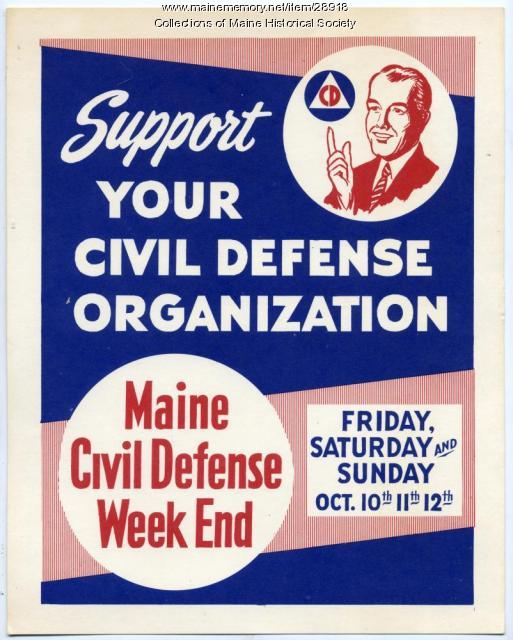Keywords: Steps
- Historical Items (191)
- Tax Records (0)
- Architecture & Landscape (4)
- Online Exhibits (57)
- Site Pages (74)
- My Maine Stories (21)
- Lesson Plans (1)
Online Exhibits
Your results include these online exhibits. You also can view all of the site's exhibits, view a timeline of selected events in Maine History, and learn how to create your own exhibit. See featured exhibits or create your own exhibit
Exhibit
Named for the two largest things in Maine at the turn of the 20th century, Mt. Katahdin and Granger of Stetson, were known as the Largest Oxen in the World. Unable to do farm work because of their size, they visited fairs and agricultural events around the Northeast.
Exhibit
Rum, Riot, and Reform - Overview & Introduction
"… Society from May to November 1998, is a first step toward the history of Maine's role in the era of alcohol reform."
Exhibit
St-Jean-Baptiste Day -- June 24th -- in Lewiston-Auburn was a very public display of ethnic pride for nearly a century. Since about 1830, French Canadians had used St. John the Baptist's birthdate as a demonstration of French-Canadian nationalism.
Exhibit
Practical Nursing in Waterville
The Maine School of Practical Nursing opened a facility in Waterville in 1957 and continued teaching practical nursing there until about 1980 when changes in the profession and in the state's educational structure led to its demise.
Exhibit
Northern Threads: Penobscot mocassins
A themed exhibit vignette within "Northern Threads, Part I," about telling stories through Indigenous clothing, featuring an essay by Jennifer Sapiel Neptune (Penobscot.)
Exhibit
Rum, Riot, and Reform - 1865 to 1919: The Drys Gain New Adherents and Leaders
"Even this step did little to dry up those who wished to imbibe. From 1905 to 1911, Maine created a Liquor Enforcement Commission with deputies…"
Exhibit
Music in Maine - Community and School Marching Bands
"… Lewiston wrote the Sainte-Cécile March and Two Step for The Fanfare (Band) Sainte Cécile Band in 1907, at a time when preserving the French…"
Exhibit
Civil Defense: Fear and Safety
In the 1950s and the 1960s, Maine's Civil Defense effort focused on preparedness for hurricanes, floods and other natural disasters and a more global concern, nuclear war. Civil Defense materials urged awareness, along with measures like storing food and other staple items and preparing underground or other shelters.
Exhibit
<i>Of Note: Maine Sheet Music</i> features captivating covers of original sheet music along with stories about Maine connections to the songs. Before people had easy access to popular music from records, radios, and the internet, they played songs of the day on instruments at home, using sheet music purchased at music stores. Iconic Maine subjects like lobsters, pine trees, and winter were perfect for lyrics sung by luminaries like Rudy Vallée of Westbrook, and intricate artwork of Maine's landscape graced the sheet music covers.
Exhibit
Yarmouth's "Third Falls" provided the perfect location for papermaking -- and, soon, for producing soda pulp for making paper. At the end of the 19th century and beginning of the 20th, Yarmouth was an international leader in soda pulp production.
Exhibit
Anshe Sfard, Portland's Early Chassidic Congregation
Chassidic Jews who came to Portland from Eastern Europe formed a congregation in the late 19th century and, in 1917, built a synagogue -- Anshe Sfard -- on Cumberland Avenue in Portland. By the early 1960s, the congregation was largely gone. The building was demolished in 1983.
Exhibit
Photographer Elijah Cobb's 1985 portfolio of the Laura E. Richards House, with text by Rosalind Cobb Wiggins and Laura E. Putnam.
Exhibit
Informal family photos often include family pets -- but formal, studio portraits and paintings also often feature one person and one pet, in formal attire and pose.
Exhibit
Rum, Riot, and Reform - Women Leaders and Temperance
"… to see Temperance women as old maids, out of step with the roaring 20s—a very different image from the young heroines portrayed in the 1850s."
Exhibit
A Soldier's Declaration of Independence
William Bayley of Falmouth (Portland) was a soldier in the Continental Army, seeing service at Ticonderoga, Valley Forge, Monmouth Court House, and Saratoga, among other locations. His letters home to his mother reveal much about the economic hardships experienced by both soldiers and those at home.
Exhibit
Maine is home to dozens of summer-long youth camps and untold numbers of day camps that take advantage of water, woods, and fresh air. While the children, counselors, and other staff come to Maine in the summer, the camps live on throughout the year and throughout the lives of many of the campers.
Exhibit
The West Baldwin Methodist Church, founded in 1826, was one of three original churches in Baldwin. While its location has remained the same, the church has undergone numerous changes to serve the changing community.
Exhibit
Walter Wyman's vision to capture the power of Maine's rivers to produce electricity led to the formation of Central Maine Power Co. and to a struggle within the state over what should happen to the power produced by the state's natural resources.
Exhibit
Fallen Heroes: Maine's Jewish Sailors and Soldiers
Thirty-four young Jewish men from Maine died in the service of their country in the two World Wars. This project, including a Maine Memory Network exhibit, is meant to say a little something about some of them. More than just names on a public memorial marker or grave stone, these men were getting started in adult life. They had newly acquired high school and college diplomas, they had friends, families and communities who loved and valued them, and felt the losses of their deaths.
Exhibit
Desserts have always been a special treat. For centuries, Mainers have enjoyed something sweet as a nice conclusion to a meal or celebrate a special occasion. But many things have changed over the years: how cooks learn to make desserts, what foods and tools were available, what was important to people.
Exhibit
Otisfield's One-Room Schoolhouses
Many of the one-room schoolhouses in Otisfield, constructed from 1839 through the early twentieth century, are featured here. The photos, most of which also show teachers and children, were taken between 1898 and 1998.
Exhibit
George W. Hinckley and Needy Boys and Girls
George W. Hinckley wanted to help needy boys. The farm, school and home he ran for nearly sixty nears near Fairfield stressed home, religion, education, discipline, industry, and recreation.
Exhibit
Memorializing Civil War Veterans: Portland & Westbrook
Three cemeteries -- all of which were in Westbrook during the Civil War -- contain headstones of Civil War soldiers. The inscriptions and embellishments on the stones offer insight into sentiments of the eras when the soldiers died.
Exhibit
Prohibition in Maine in the 1920s
Federal Prohibition took hold of America in 1920 with the passing of the Volstead Act that banned the sale and consumption of all alcohol in the US. However, Maine had the Temperance movement long before anyone was prohibited from taking part in one of America's most popular past times. Starting in 1851, the struggles between the "drys" and the "wets" of Maine lasted for 82 years, a period of time that was everything but dry and rife with nothing but illegal activity.
























